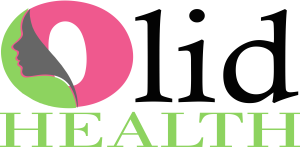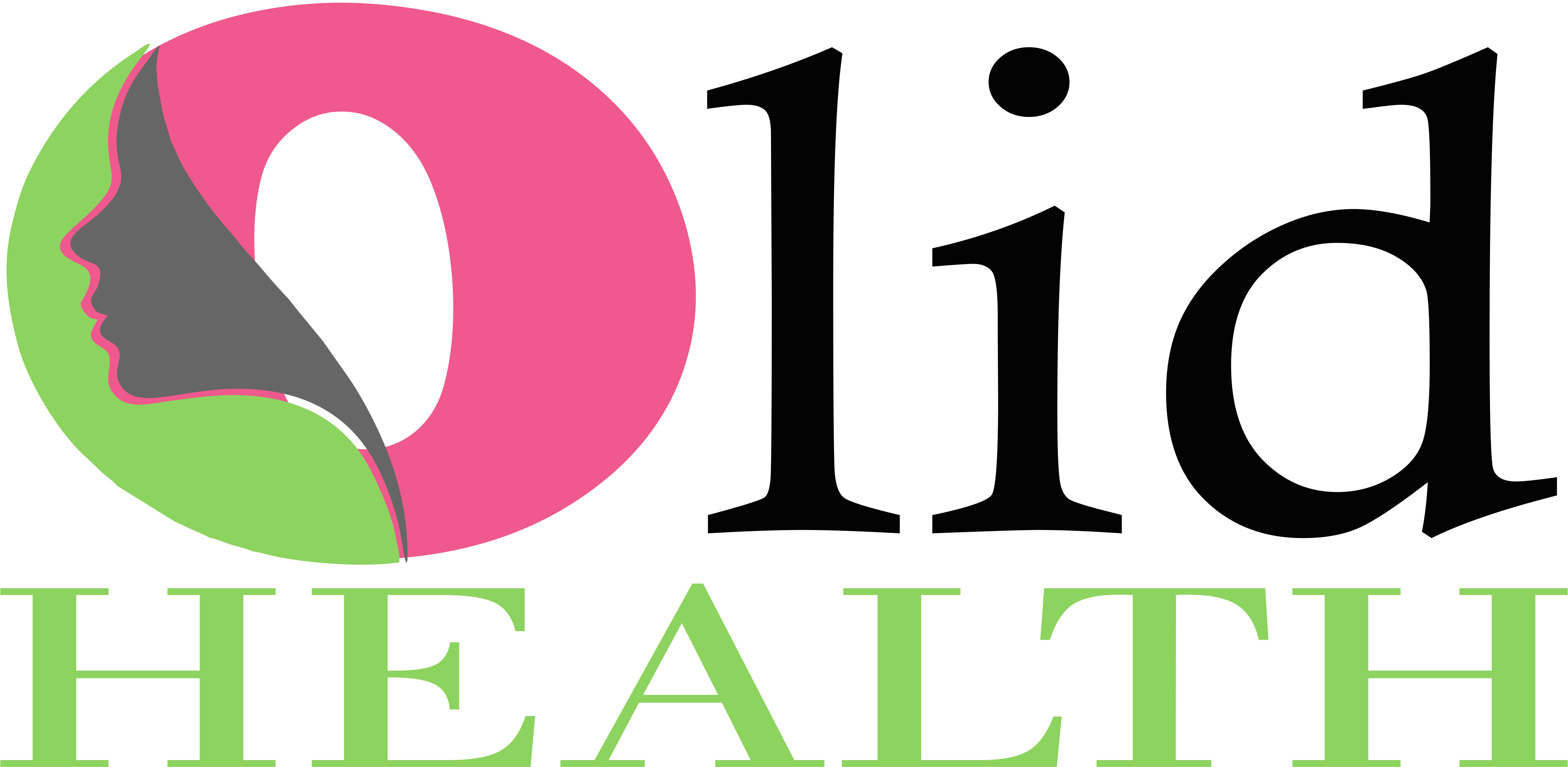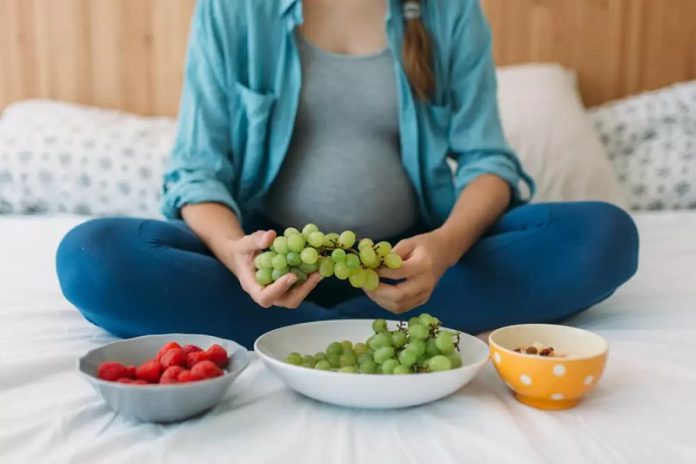Olidhealth.com – It is crucial to make a sufficient diet for both mom and baby. Sometimes, mom has an anemic condition that is caused by a lack of nutritious food or a bad lifestyle including insomnia. Moreover, pregnant women are also vulnerable to getting anemia because the blood is also being transferred to the baby and the mom barely keeps up to produce red blood cells. Naturally, mom could overcome this problem by consuming healthy food that has enough minerals like iron and magnesium.
Before getting this kind of problem, you could prevent it by consuming these healthy foods first beforehand. In this article, we show you 32 kinds of food that are good for treating or preventing anemia during pregnancy. Moreover, it is also safe to be consumed and has other benefits besides its main uses as a red blood cell generator.
New Mom In Pregnancy Are Prone With Anemia
As we mentioned before, during pregnancy time, the mom shared the nutrition with the baby. So, in other words, they need double nutrition even though its looks like one person. Sometimes, the mom has a big appetite because the baby wants to eat something too. However, new moms may consume certain food that has low nutrition and it is not cover the basic need to produce enough red blood cells. Lack of sleep and stress also burden mom and reduce red blood cell production. Because of that, her partner should accompany this new mom to give them healthy foods for preventing anemia.
How To Prevent Anemia In Pregnant Women

Anemia during pregnancy is usually related to dietary management. It is important to make a balanced meal with green leafy vegetables, well-cooked meat, and grains as carbohydrate addition. Moreover, anemia is commonly caused by low iron intake as well as poor dietary intake [1]. So, you can prevent or treat it by consuming healthy food that is rich in minerals like iron, magnesium, or copper [2]. You could also add nutrients like vitamin C to help iron absorption and reproduce red blood cells faster.
However, there are also some conditions in that you may have a low red blood cell count, yet you are fine and don’t look like having anemia. You can check our article about increasing red blood cell count by consuming healthy food.
Healthy Food Can Reproduce More Red Blood Cells
To begin with, food can be categorized by its type to maintain health. In anemia cases, there are foods that good for preventing anemia during pregnancy. In this article, we separate some food categories that could reproduce red blood cells. Each of these categories contains benefits based on its nutritional value. Read thoroughly to gain information on how to prevent anemia in pregnant women with certain food.
Meat & Poultry
The first category is meat & poultry to boost red blood cell production. Moreover, this kind of food has heme iron which is essential to build blood cells to fight against anemia during pregnancy. Essential minerals such as phosphorus, magnesium, and copper also contribute to producing red blood cells effectively.
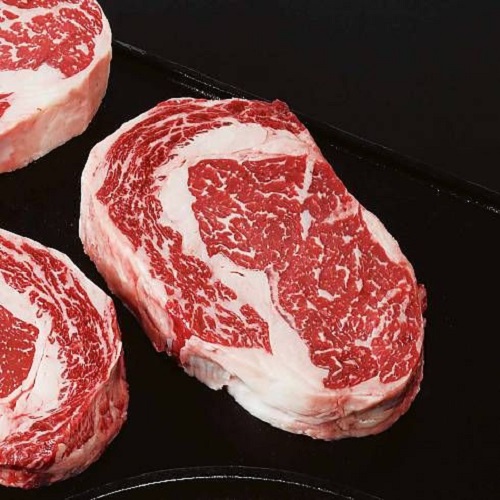
Beef
According to USDA, 100-gram cooked beef contains [3]:
| Iron | 1.9 milligrams |
| Magnesium | 12.0 milligrams |
| Vitamin B9 (Folate) | 6.0 micrograms |
| Vitamin B12 | 1.6 micrograms |
| Vitamin C | 0.0 milligram |
Beef is the best source of iron and folate to provide nutrition for pregnant women along with treating anemia. It also contains folate and vitamin B12 for baby development. Iron in beef meat is also important for preventing anemia and remaking red blood cells [4]. Moreover, beef is safe for pregnant women as long as it is well cooked.
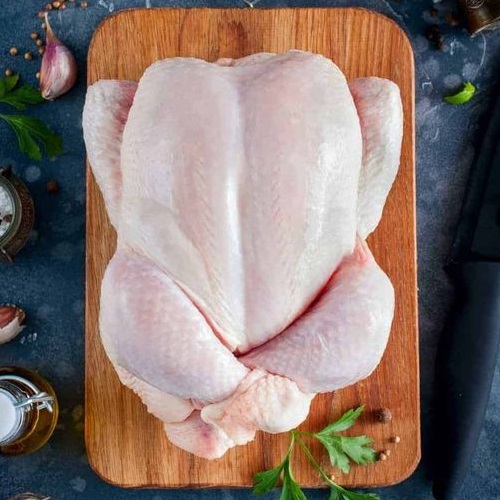
Chicken
The nutrition value of chicken on 100 grams based on USDA [5]:
| Iron | 1.2 milligrams |
| Magnesium | 20.0 milligrams |
| Vitamins B9 (Folate) | 7.0 micrograms |
| Vitamin B12 | 0.5 micrograms |
| Vitamin C | 0.0 milligrams |
Chicken is also a good choice to get adequate iron minerals. It also has a decent amount of vitamin B9 and B12. Red meat is considered to have good heme iron properties for preventing anemia.
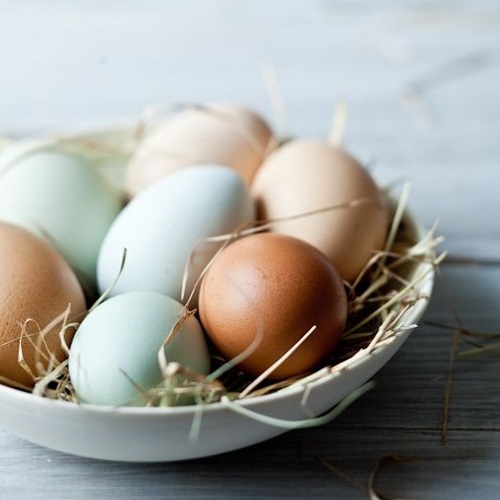
Eggs
The nutrition value of one egg serving (50 grams )[6]:
| Iron | 0.8 milligrams |
| Magnesium | 5.7 milligrams |
| Vitamin B9 (Folate) | 35.6 micrograms |
| Vitamin B12 | 0.5 micrograms |
| Vitamin C | 0.0 milligrams |
Eggs can be iron source food along with many nutrients to provide food for the baby. Furthermore, Consuming eggs may treat anemia while on pregnancy time. One egg per day is enough to secure the dietary intake while combining with other food such as green vegetables and legumes.
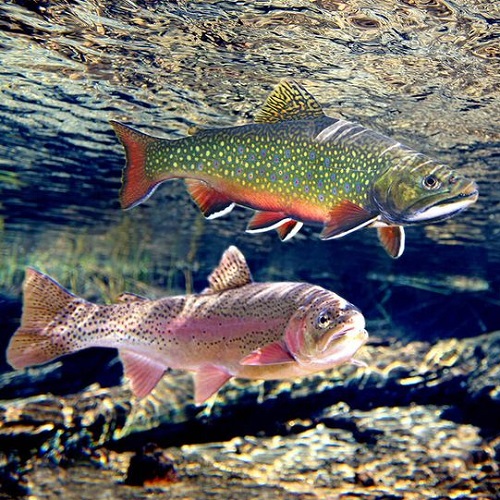
Freshwater Trout
The nutrition content of freshwater trout (62 grams serving based on USDA) [7]:
| Iron | 1.9 milligrams |
| Magnesium | 28.0 milligrams |
| Vitamin B9 (Folate) | 15.0 micrograms |
| Vitamin B12 | 7.5 micrograms |
| Vitamin C | 0.5 milligrams |
Trout have high iron content than other freshwater fish for preventing anemia. Moreover, this fish also contain other minerals such as potassium and zinc which are essential during pregnancy. This protein-rich fish can be served boiled or grilled method as long as it is not charred
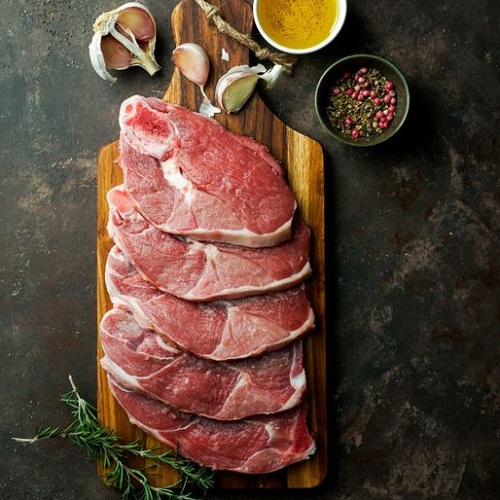
Lamb
In 100 gram serving, it contains [8]:
| Iron | 1.6 milligrams |
| Magnesium | 21.0 milligrams |
| Vitamin B9 (Folate) | 18.0 micrograms |
| Vitamin B12 | 2.3 micrograms |
| Vitamin C | 0.0 milligram |
Fortunately, pregnant women could eat lamb as their dietary meal. However, it should be limited to small servings. Consuming lamb during pregnancy can provide minerals like iron and magnesium to help produce red blood cells. Moreover, avoid eating lamb organs like the liver since retinol can be harmful to your pregnancy.

Turkey
The nutrition value in a 100-gram serving contains [9]:
| Iron | 1.5 milligrams |
| Magnesium | 30.0 milligrams |
| Vitamin B9 (Folate) | 7.0 micrograms |
| Vitamin B12 | 1.3 micrograms |
| Vitamin C | 0.0 milligrams |
Turkey may have similar nutrition value as chicken but it is bigger. Experts also warn pregnant women before eating this food unless it is cooked to the right degree. Since turkey is usually served on thanksgiving, not properly cooked meat sometimes happens. So, consume it when it’s well done cooking to regain your blood level and increase red blood cell count.
Vegetables
Vegetables, especially green-colored leafy contain non-heme iron which is good for anemia. Moreover, this kind of food is utterly safe for pregnant women to be consumed. Try to pick one of these vegetables for your dietary meal and combined it with other food to complete its nutrient for the baby.
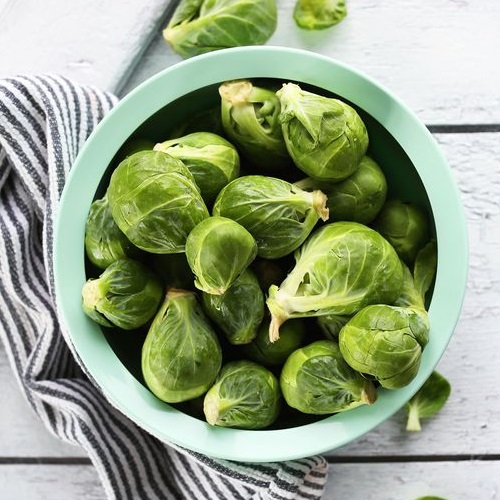
Brussels Sprouts
Based on USDA, one sprout of Brussel (21 grams) contains [10]:
| Iron | 0.3 milligrams |
| Magnesium | 4.2 milligrams |
| Vitamin B9 (Folate) | 12.6 micrograms |
| Vitamin B12 | 0.0 micrograms |
| Vitamin C | 13.0 milligrams |
As one of the green leafy vegetables, brussels sprouts have a good amount of minerals and vitamins. It contains iron and folate which is essential for producing red blood cells. On top of that, this vegetable also has vitamin C to aid iron absorption. For pregnant women, this typical vegetable also has other benefits to prevent defect development in the baby.
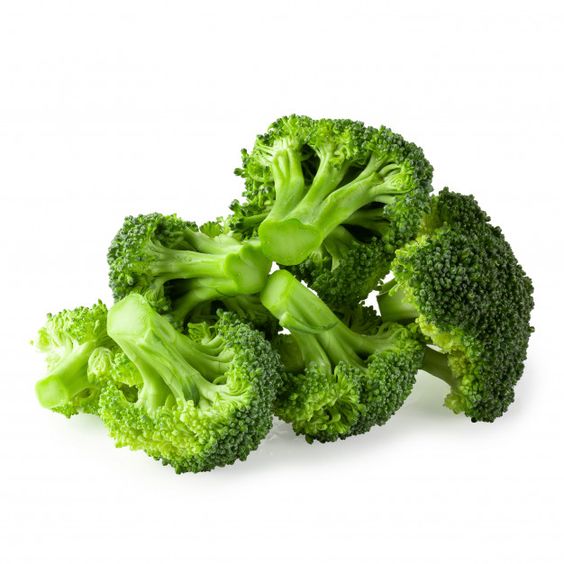
Broccoli
The nutrition value of 100 grams serves as follows [11]:
| Iron | 0.7 milligrams |
| Magnesium | 21.0 milligrams |
| Vitamin B9 (Folate) | 108.0 micrograms |
| Vitamin B12 | 0.0 micrograms |
| Vitamin C | 65.0 milligrams |
Broccoli doesn’t have much iron as Brussel sprouts, yet it has contain vitamin B9 and C to complete it. These two vitamins are important as mineral carriers. Furthermore, you can eat it cooked or raw as long as it is clean. Wash it to wear of pesticides that could stick to this vegetable. However, it may more smelly than a cooked one.
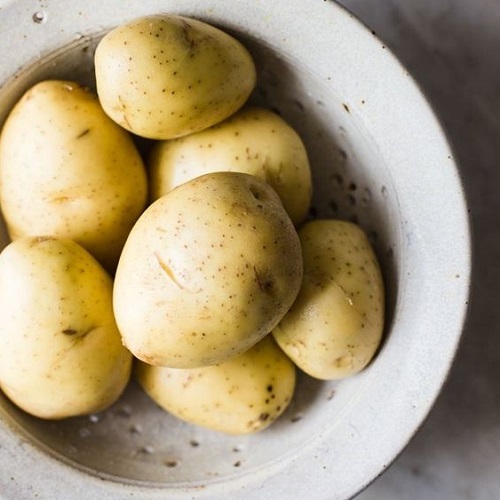
Potatoes
In whole potato (155 grams) contains [12]:
| Iron | 0.5 milligrams |
| Magnesium | 39.0 milligrams |
| Vitamin B9 (Folate) | 14.0 micrograms |
| Vitamin B12 | 0.0 micrograms |
| Vitamin C | 20.0 milligrams |
Potatoes are crucial food during pregnancy since they contain a high amount of folate. Furthermore, it also has a decent amount of minerals such as iron and magnesium to keep up red blood cell production and prevent anemia at later times. The best way to consume this tuber plant is to boil it. You can deep fried it, but the excessive oils will reduce its benefit to the body.
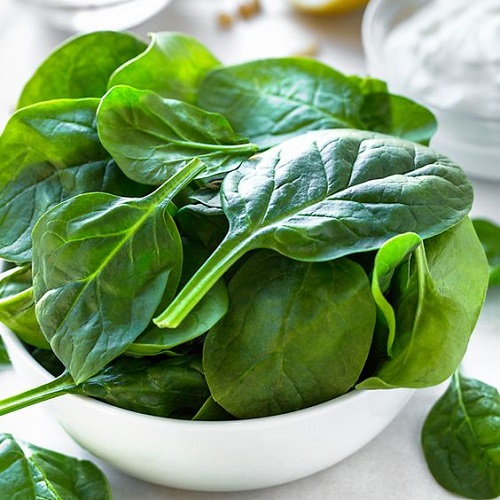
Spinach
According to USDA, a 100-gram serving of spinach contains[13]:
| Iron | 1.1 milligrams |
| Magnesium | 93.0 milligrams |
| Vitamin B9 (Folate) | 113.0 micrograms |
| Vitamin B12 | 0.0 micrograms |
| Vitamin C | 30.3 milligrams |
In general, spinach is a home remedy for treating anemia. You should know it since it has non-heme iron and vitamin C to help reproduce blood cells. This green vegetable is also safe for pregnant women. You can eat it as salad or stir-fry with olive oils to enhance its total nutrition.
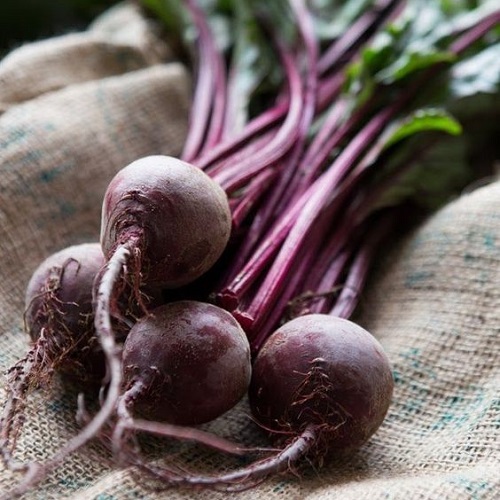
Beetroot
Slices of beetroot (85 grams) usually contain [14]:
| Iron | 0.7 milligrams |
| Magnesium | 19.6 milligrams |
| Vitamin B9 (Folate) | 68.0 micrograms |
| Vitamin B12 | 0.0 micrograms |
| Vitamin C | 3.1 milligrams |
You may think the anemia prevention on this vegetable is on its color. However, it is not actually true. The iron on beetroot is the main factor in treating anemia during pregnancy. Moreover, the red color on its skin and flesh is a natural compound called anthocyanin that serves as an antioxidant.
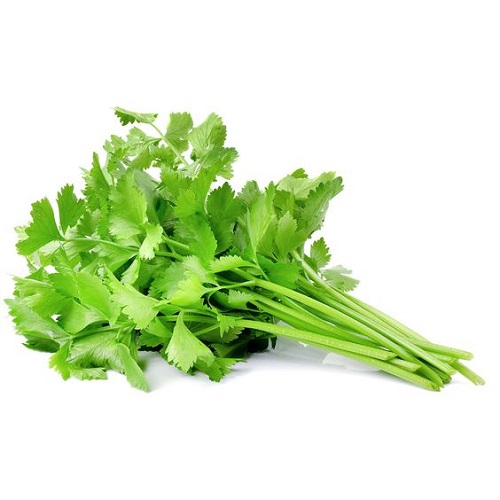
Celery
Based on USDA, one stalk of celery (64 grams) is as follows [15]:
| Iron | 0.1 milligrams |
| Magnesium | 7.0 milligrams |
| Vitamin B9 (Folate) | 23.0 micrograms |
| Vitamin B12 | 0.0 micrograms |
| Vitamin C | 2.0 milligrams |
Celery is commonly served as a garnish in Asian cuisine, but it is also good for treating anemia in pregnant women. Like spinach and broccoli, celery also contains vitamin A derived from beta carotene normally save for pregnancy. However, another vitamin A from retinol is harmful and toxic during pregnancy. On top of that, beta-carotene could also provide protection against retinol toxicity.
Fresh Fruit
Some fresh fruit may help to prevent anemia but in a different way. Since fruit rarely contains minerals, it is packed with vitamins, especially vitamin C which is abundant in this food. This vitamin support metabolism to transfer iron which is converted into hemoglobin.
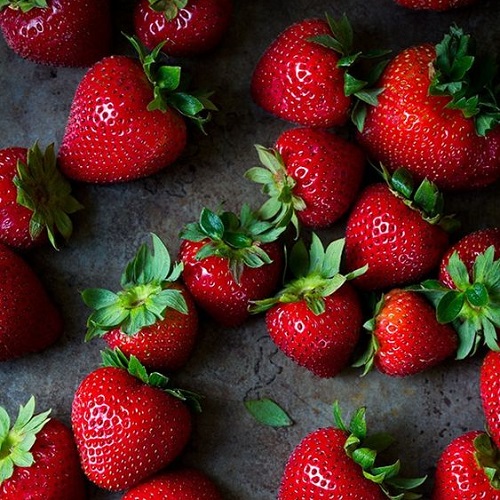
Strawberries
Based on USDA, one large strawberry (18 grams) contains [16]:
| Iron | 0.1 milligrams |
| Magnesium | 2.3 milligrams |
| Vitamin B9 (Folate) | 4.3 micrograms |
| Vitamin B12 | 0.0 micrograms |
| Vitamin C | 10.6 milligrams |
Strawberries are a famous fruit that is usually consumed fresh and raw. Furthermore, this fruit contains iron, magnesium, and vitamin C to prevent anemia during pregnancy. Another benefit of vitamin C is could enhance immunity while improving baby development.
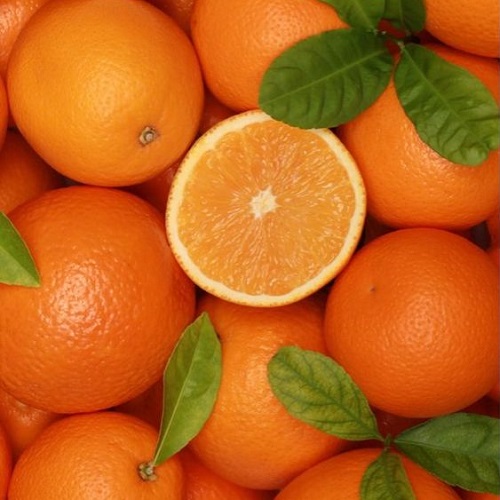
Oranges
One fruit of orange (130 grams) is as follows [17]:
| Iron | 0.1 milligrams |
| Magnesium | 13.1 milligrams |
| Vitamin B9 (Folate) | 39.2 micrograms |
| Vitamin B12 | 0.0 microgram |
| Vitamin C | 69.7 milligrams |
All of you have known that orange has an abundant amount of vitamin C. Beside it could protect the body against free radical scavengers, it also helps to prevent anemia by helping carry iron and other minerals to a production site. Consume it after having the main dish to help the digestive system.
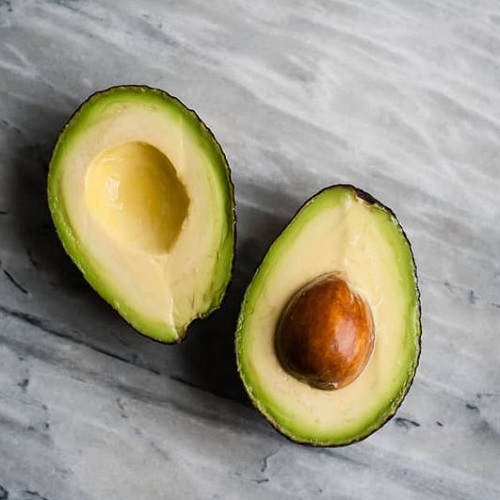
Avocadoes
One cup of sliced avocadoes (146 grams) contains [18]:
| Iron | 0.8 milligrams |
| Magnesium | 42.3 milligrams |
| Vitamin B9 (Folate) | 118.0 micrograms |
| Vitamin B12 | 0.0 microgram |
| Vitamin C | 14.6 milligrams |
Avocados are one of the superfoods that have great sources of nutrients. Furthermore, it also contains vitamin E and omega 3 which could boost red blood cell production. And it is worth being consumed by pregnant women in moderate amounts.
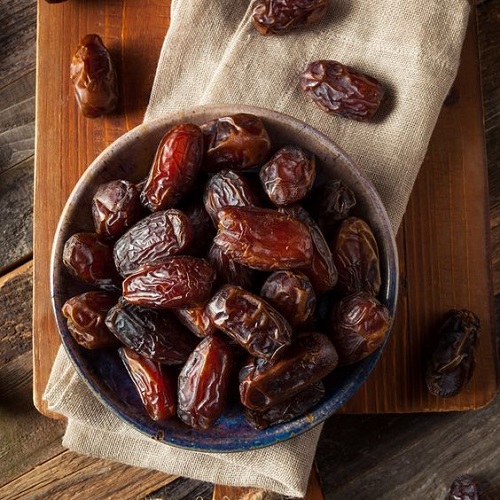
Palm Dates
One Daglet Noor date (7 grams) is as follows [19]:
| Iron | 0.1 milligrams |
| Magnesium | 3.0 milligrams |
| Vitamin B9 (Folate) | 1.3 micrograms |
| Vitamin B12 | 0.0 micrograms |
| Vitamin C | < 0.1 milligrams |
Palm dates are packed with abundant nutrients for both mom and baby to help reduce the risk of anemia. Moreover, it also has many benefits since it has natural sugar that is more healthy than the conventional one. If you are interested in this food, you can read our article to find out the benefit of dates.
Legumes and Lentils
This food is the best optional food to regain energy while limiting sugar intake. Too much sugar can be harmful when you have a baby. Moreover, in this selected food, they could treat or prevent anemia in a small serving.
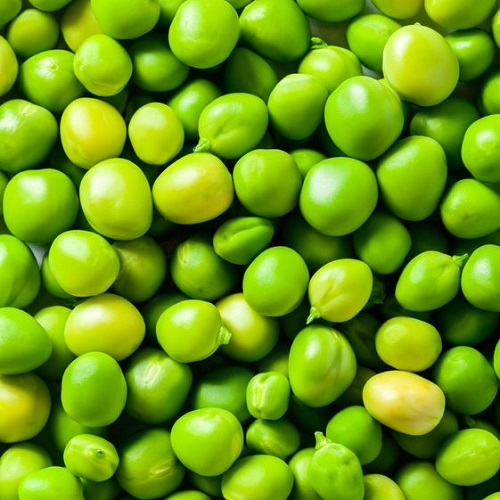
Green Peas
In 100 gram serving of green peas, they contain [20]:
| Iron | 1.5 milligrams |
| Magnesium | 33.0 milligrams |
| Vitamin B9 (Folate) | 65.0 micrograms |
| Vitamin B12 | 0.0 microgram |
| Vitamin C | 40.0 milligrams |
Green peas are great for pregnant women since it has a good source of nutrition. It also helps to prevent anemia and is packed with protein. Before you consume this pea, wash and cook it properly to eliminate the pesky bacteria on it.
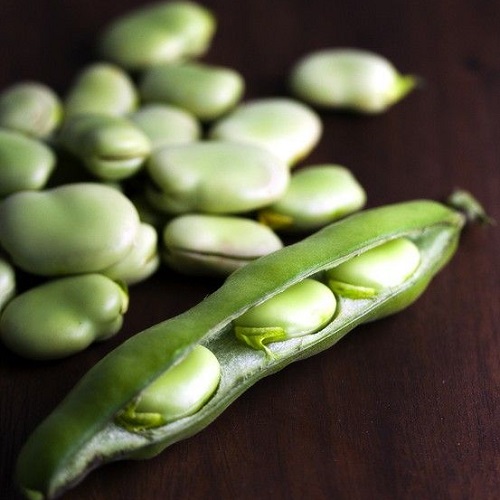
Lima Beans
Based on USDA, one cup of lima bean (178 grams) contains [21]:
| Iron | 13.4 milligrams |
| Magnesium | 400.0 milligrams |
| Vitamin B9 (Folate) | 703.0 micrograms |
| Vitamin B12 | 0.0 microgram |
| Vitamin C | 0.0 milligram |
Lima bean is another bean option for pregnant women to consume. Besides it containing iron and folate to treat anemia, it also has vitamin K and B1 that contribute to blood clots and improve brain development. Moreover, this bean is safe on a small serving.
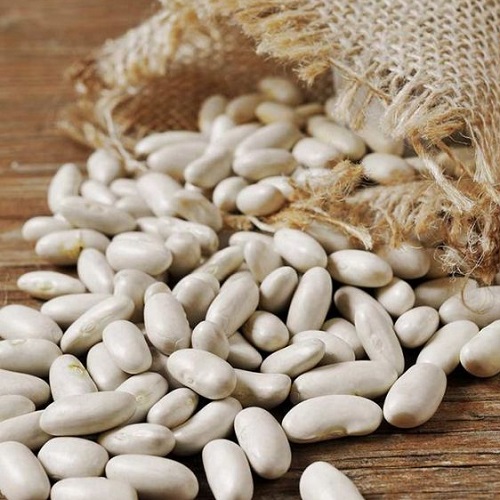
Navy Beans
In 100 grams of navy beans contain [22]:
| Iron | 5.5 milligrams |
| Magnesium | 175.0 milligrams |
| Vitamin B9 (Folate) | 364.0 micrograms |
| Vitamin B12 | 0.0 microgram |
| Vitamin C | 0.0 milligram |
Some people may treat this bean to help gain some calcium to strengthen their bones. However, navy beans also have a decent amount of iron and magnesium to treat and prevent anemia. Pregnant women should eat this bean since it is beneficial for both the mom and the baby.
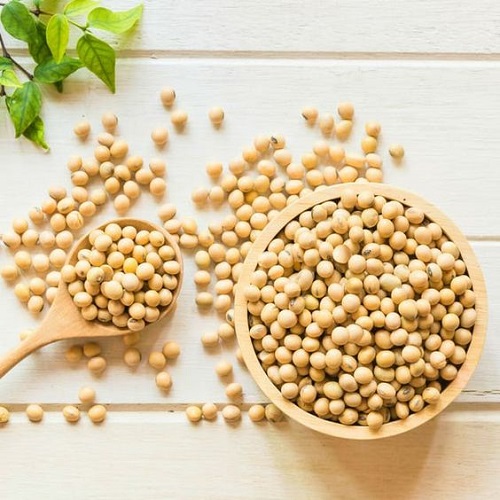
Soybeans
According to USDA, one cup of soybean (186 grams) is as follows [23]:
| Iron | 29.2 milligrams |
| Magnesium | 521.0 milligrams |
| Vitamin B9 (Folate) | 698.0 micrograms |
| Vitamin B12 | 0.0 micrograms |
| Vitamin C | 11.2 milligrams |
If you have anemia, soybeans can be an option to treat it. Surprisingly, these beans also have a decent iron amount to treat anemia during pregnancy. In addition, soybeans also contain other minerals like copper and phosphorus to strengthen the bone and support the nerve system of the baby.
Nuts and Seeds
Nuts and seeds may well option as healthy snacks for your baby. This food is usually rich in folate to help spine development. Check this food and mark it as one of your snack times.
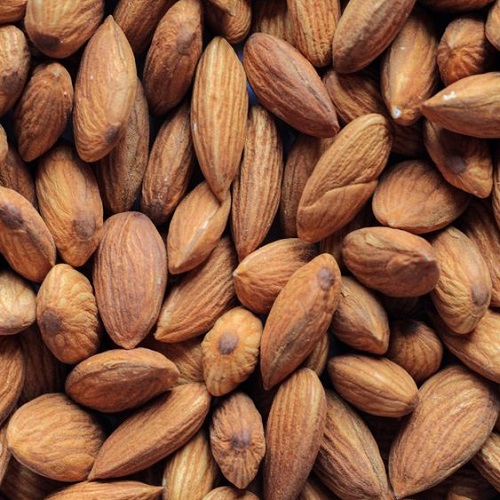
Almonds
One cup of almond (95 grams) based on USDA contains [24]:
| Iron | 3.5 milligrams |
| Magnesium | 256.0 milligrams |
| Vitamin B9 (Folate) | 41.8 micrograms |
| Vitamin B12 | 0.0 microgram |
| Vitamin C | 0.0 milligram |
Almonds are the best nuts for pregnant women after all. They have huge amounts of magnesium, folate, and iron that are essential to create red blood cells and prevent anemia. You can moderately eat it, use it as a topping, or drink almond milk as an optional choice.
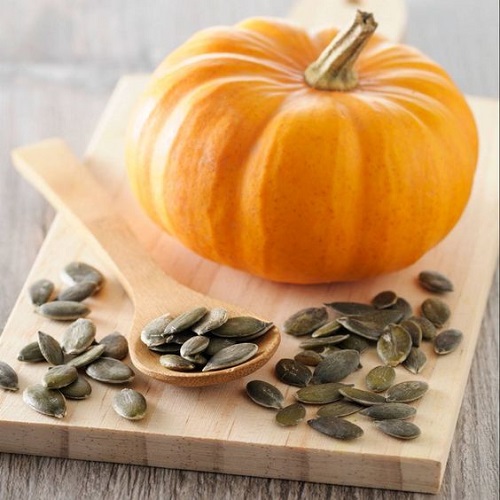
Pumpkin and Squash Seeds
One cup of pumpkin and squash seed (130 grams) is as follows [25]:
| Iron | 11.4 milligrams |
| Magnesium | 764.0 milligrams |
| Vitamin B9 (Folate) | 74.8 micrograms |
| Vitamin B12 | 0.0 microgram |
| Vitamin C | 2.5 milligrams |
As pregnant women, you may need food that has a complete source of protein and minerals to prevent anemia. Pumpkin and squash seeds are a good option to provide that. Moreover, this seed also has a huge amount of magnesium that helps to balance blood pressure and build strong bones for the baby.
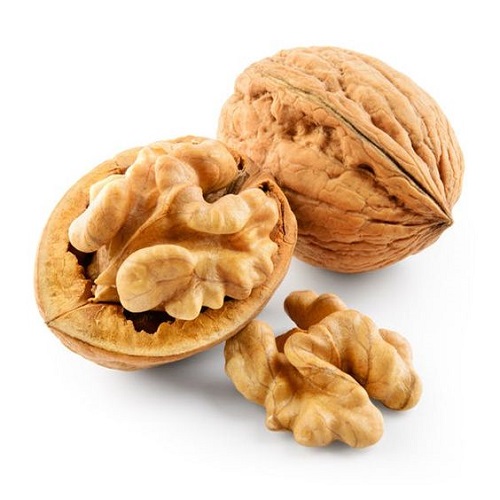
Walnuts
One cup of chopped walnut (117 grams) contains [26]:
| Iron | 3.4 milligrams |
| Magnesium | 185.0 milligrams |
| Vitamin B9 (Folate) | 115.0 micrograms |
| Vitamin B12 | 0.0 microgram |
| Vitamin C | 1.5 milligrams |
This brain-like nut could prevent anemia during pregnancy, based on its iron and folate content within walnuts. Moreover, it is also great for pregnancy since omega 3 are existed in this nut to enhance brain formation in fetuses. Consuming it as a snack is good as long as it is not too much.
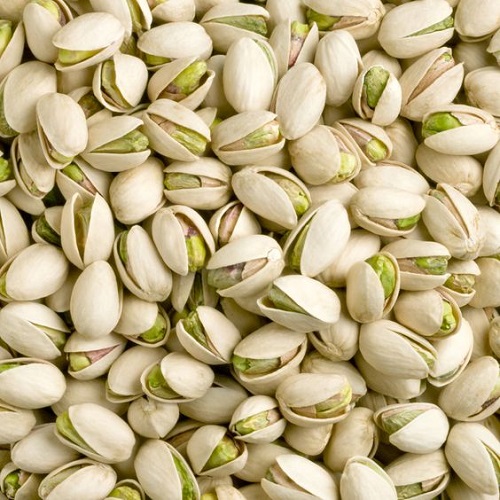
Pistachio
One medium cup of pistachios (123 grams) is as follows [27]:
| Iron | 4.8 milligrams |
| Magnesium | 150.0 milligrams |
| Vitamin B9 (Folate) | 62.7 micrograms |
| Vitamin B12 | 0.0 microgram |
| Vitamin C | 6.9 milligrams |
Generally, pistachios are good for treating constipation, but it also good for preventing anemia. These green beans have a great amount of iron and other minerals such as phosphorus and calcium. Consume this bean if you are pregnant since it has great benefits such as promoting bone health and reducing risk during delivery.
Grains
These staple food also contribute for preventing anemia during pregnancy time. However, some of them may have a limited amount since it also contains gluten which may reduce the benefit itself.
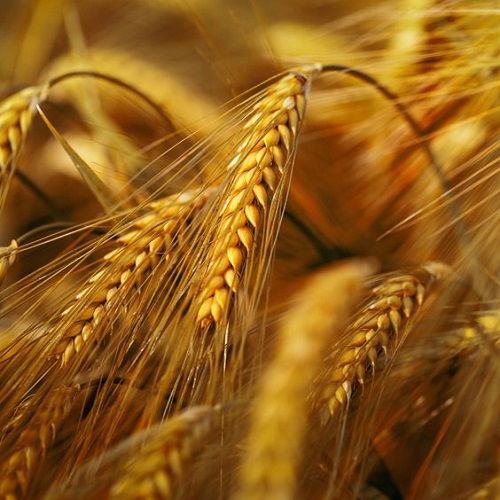
Barley Grains
One cup of barley grains (157 grams) is as follows [28]:
| Iron | 2.1 milligrams |
| Magnesium | 34.5 milligrams |
| Vitamin B9 (Folate) | 25.0 micrograms |
| Vitamin B12 | 0.0 microgram |
| Vitamin C | 0.0 milligram |
In moderate amounts, barley grain is safe for pregnant women. Despite its lack of vitamin C and B12, it is rich in minerals and folate to prevent anemia in case. Since it also contains gluten, be careful to not eat too much of it and avoid it for people with celiac disease.

Oatmeal
Oatmeal in 100 grams contains [29]:
| Iron | 4.7 milligrams |
| Magnesium | 177.0 milligrams |
| Vitamin B9 (Folate) | 56.0 micrograms |
| Vitamin B12 | 0.0 microgram |
| Vitamin C | 0.0 milligram |
Add this food to your diet plan since it has a great amount of fiber and iron. These two nutrients in oatmeal have many benefits such as smoothening digestive partway and preventing anemia caused by iron deficiency.
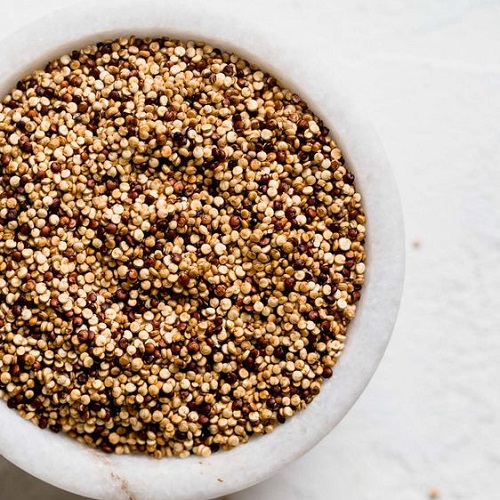
Quinoa
According to the USDA, one cup of quinoa (185 grams) is as follows [30]:
| Iron | 2.8 milligrams |
| Magnesium | 118.0 milligrams |
| Vitamin B9 (Folate) | 77.8 micrograms |
| Vitamin B12 | 0.0 micrograms |
| Vitamin C | 0.0 milligram |
Quinoa is a kind of grain that doesn’t have gluten on it. It is also safe for pregnant women in moderate amounts. Moreover, This grain contains magnesium and iron to help treat anemia in case.

Sorghum Grains
Based on USDA, 100 grams of sorghum grains contains [31]:
| Iron | 3.4 milligrams |
| Magnesium | 165.0 milligrams |
| Vitamin B9 (Folate) | 20.0 micrograms |
| Vitamin B12 | 0.0 microgram |
| Vitamin C | 0.0 milligram |
This food may rarely be seen in your usual grocery store, but it is a staple product in India and Africa. Sorghum also could replace wheat as the main dietary with benefit. For pregnant women, this food could prevent anemia since it has rich in iron content. Moreover, sorghum is a gluten-free product, so it is also beneficial for reducing gluten dietary.
Seafood
At least, seafood is the biggest source of minerals to be consumed. However, we list this food in the last place because we are concerned about the mercury in this food. You should consider this food as the main source of iron minerals if you are pregnant, but one or two times a month is still safe enough to eat.
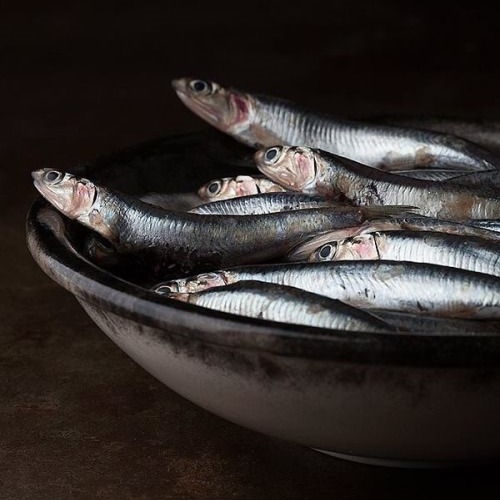
Sardines
Sardines in 100 grams contain [32]:
| Iron | 3.0 milligrams |
| Magnesium | 39.0 milligrams |
| Vitamin B9 (Folate) | 10.0 micrograms |
| Vitamin B12 | 8.9 micrograms |
| Vitamin C | 0.0 milligram |
Among all fish, sardines are considered safe to consume for pregnant women. Furthermore, it has low mercury on it and some expert also recommends it. This fish is also good for treating and preventing anemia. On top of that, cooked fresh sardines have less calcium than the canned ones which may block iron absorption.
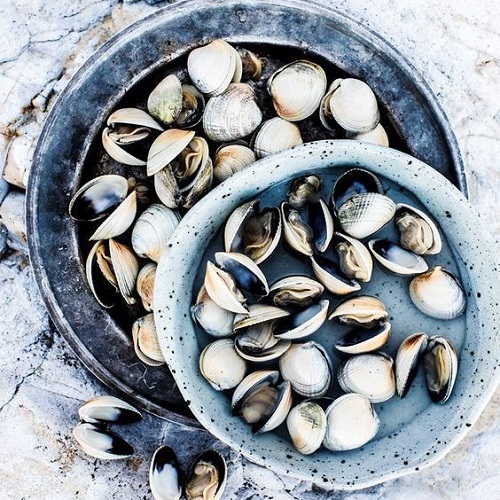
Clams
Based on USDA, 100 grams of cooked clam is as follows [33]:
| Iron | 13.9 milligrams |
| Magnesium | 14.0 milligrams |
| Vitamin B9 (Folate) | 36.0 micrograms |
| Vitamin B12 | 40.3 micrograms |
| Vitamin C | 10.0 milligrams |
This seafood is also ranked as the highest iron source food among all seafood. Furthermore, you should well cook it to remove the pathogen dan bacteria. A small serving of clam is considered safe to prevent anemia during pregnancy. However, limiting the intake of this food once a week is important to avoid its side effect of it.

Shrimps
In 100 grams of shrimp contain [34]:
| Iron | 1.3 milligrams |
| Magnesium | 40.0 milligrams |
| Vitamin B9 (Folate) | 33.0 micrograms |
| Vitamin B12 | 1.9 micrograms |
| Vitamin C | 1.5 milligrams |
This crustacean food is usually presented in Asian cuisine. Besides, it has a tasty flavor, shrimp also could treat anemia during pregnancy. Well, it has a good amount of iron content, but consume it once or twice a week in a low amount since it is generally not safe if too much of it.
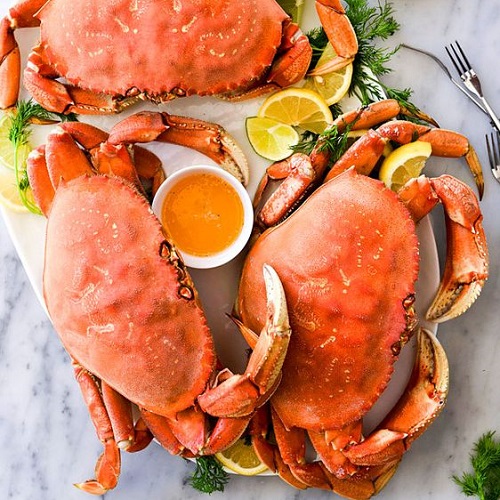
Crabs
One whole Dungeness crab (163 grams) is as follows [35]:
| Iron | 0.6 milligrams |
| Magnesium | 73.4 milligrams |
| Vitamin B9 (Folate) | 71.7 micrograms |
| Vitamin B12 | 14.7 micrograms |
| Vitamin C | 5.7 milligrams |
Like other crustaceans, crabs also have a good source of iron in general. However, women during pregnancy are concerned about the safety to eat crab since seafood may contain mercury. Fortunately, crabs are low in mercury and considered safe to eat. So try to eat this seafood to prevent anemia while on pregnancy time.
Conclusion
Anemia during pregnancy commonly happens, especially in low-iron food intake cases. Normally, there are many ways to treat and prevent anemia such as working out or cardio, but it’s dangerous for the baby. So, the only way to treat them is to supply healthy food for both of them. Essential minerals such as iron and protein like folate are had an important role to produce red blood cells. Moreover, vitamin C usually on citrus fruit is also essential for protecting cells while carrying minerals all around the body. All the above food are considered safe to be eaten and good enough to help treat anemia.
Reference
[1] https://www.ncbi.nlm.nih.gov/pmc/articles/PMC5954959/ – Anemia during pregnancy and the common causes of it.
[2] https://www.ncbi.nlm.nih.gov/pmc/articles/PMC7477519/ – Study about anemia case on pregnant women caused by iron deficiency.
[3] https://fdc.nal.usda.gov/fdc-app.html#/food-details/170200/nutrients – Beef nutrition value in general.
[4] https://www.ncbi.nlm.nih.gov/pmc/articles/PMC3257743/ – Meat provides iron minerals to prevent anemia.
[5] https://fdc.nal.usda.gov/fdc-app.html#/food-details/171624/nutrients – Chicken frankfurter nutrition based on USDA.
[6] https://fdc.nal.usda.gov/fdc-app.html#/food-details/748967/nutrients – The nutrition value of one egg.
[7] https://fdc.nal.usda.gov/fdc-app.html#/food-details/172004/nutrients – nutrition content of cooked trout.
[8] https://fdc.nal.usda.gov/fdc-app.html#/food-details/174370/nutrients – Raw Lamb meat nutrient according to USDA.
[9] https://fdc.nal.usda.gov/fdc-app.html#/food-details/171506/nutrients – Well-cooked turkey and its nutrient value.
[10] https://fdc.nal.usda.gov/fdc-app.html#/food-details/169971/nutrients – Brussels sprouts base protein and mineral value.
[11] https://fdc.nal.usda.gov/fdc-app.html#/food-details/169967/nutrients – Nutrient on broccoli based on USDA.
[12] https://fdc.nal.usda.gov/fdc-app.html#/food-details/170033/nutrients – Base values of potatoes in general.
[13] https://fdc.nal.usda.gov/fdc-app.html#/food-details/1999633/nutrients – The nutrient value of spinach.
[14] https://fdc.nal.usda.gov/fdc-app.html#/food-details/169146/nutrients – Nutrition list of beetroot.
[15] https://fdc.nal.usda.gov/fdc-app.html#/food-details/169988/nutrients – Mineral and protein list of celery.
[16] https://fdc.nal.usda.gov/fdc-app.html#/food-details/167762/nutrients – Nutrition value of one large strawberry.
[17] https://fdc.nal.usda.gov/fdc-app.html#/food-details/169097/nutrients – Orange nutrition list in general.
[18] https://fdc.nal.usda.gov/fdc-app.html#/food-details/171705/nutrients – Avocadoes properties based on USDA.
[19] https://fdc.nal.usda.gov/fdc-app.html#/food-details/171726/nutrients – Protein and mineral value of palm dates.
[20] https://fdc.nal.usda.gov/fdc-app.html#/food-details/170419/nutrients – Nutrition list of green peas according to USDA.
[21] https://fdc.nal.usda.gov/fdc-app.html#/food-details/174252/nutrients – Lima bean and its nutrition value.
[22] https://fdc.nal.usda.gov/fdc-app.html#/food-details/173745/nutrients – Nutrition content of navy beans.
[23] https://fdc.nal.usda.gov/fdc-app.html#/food-details/174270/nutrients – Nutrition values of soybeans.
[24] https://fdc.nal.usda.gov/fdc-app.html#/food-details/170567/nutrients – Almond is good folate source for pregnant women based on USDA.
[25] https://fdc.nal.usda.gov/fdc-app.html#/food-details/170556/nutrients – Nutrition value of mixed pumpkins and squash seeds.
[36] https://fdc.nal.usda.gov/fdc-app.html#/food-details/170187/nutrients – English walnut and its nutrition content.
[27] https://fdc.nal.usda.gov/fdc-app.html#/food-details/170184/nutrients – Protein and mineral value of pistachio.
[28] https://fdc.nal.usda.gov/fdc-app.html#/food-details/170285/nutrients – Barley grain on usual nutrition value.
[29] https://fdc.nal.usda.gov/fdc-app.html#/food-details/169705/nutrients – Oatmeal properties in general.
[30] https://fdc.nal.usda.gov/fdc-app.html#/food-details/168917/nutrients – Nutrition content of Quinoa according to USDA.
[31] https://fdc.nal.usda.gov/fdc-app.html#/food-details/169716/nutrients – The protein value of sorghum grains.
[32] https://fdc.nal.usda.gov/fdc-app.html#/food-details/1098981/nutrients – Nutritional value of sardine that is based on USDA.
[33] https://fdc.nal.usda.gov/fdc-app.html#/food-details/171974/nutrients – Nutrition list of cooked clam.
[34] https://fdc.nal.usda.gov/fdc-app.html#/food-details/171970/nutrients – Cooked shrimp and its nutrition content.
[35]
